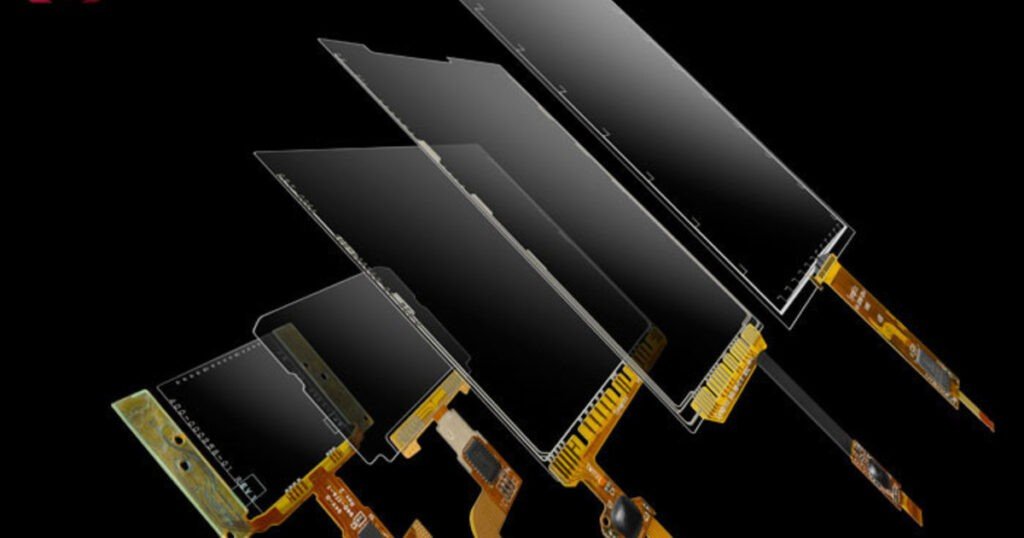Introduction

Display modules are critical components of handheld devices, influencing their usability, performance, and overall user experience. From smartphones and tablets to gaming consoles and industrial devices, the type and quality of display modules play a significant role in the functionality and appeal of these gadgets. This article delves into the applications of display modules in various handheld devices, examining market trends, product classifications, the impact of digitalization, and future prospects.
Understanding Display Modules
Display modules comprise several components, including the screen panel, backlighting, and driver circuitry, which work together to produce images. Technologies such as LCD, OLED, E-Ink, and MicroLED offer unique features and benefits, making them suitable for different types of handheld devices.
Market and Scale of Handheld Devices
The handheld device market is booming, driven by the increasing demand for portable and compact devices. This market includes smartphones, tablets, handheld gaming consoles, portable medical devices, and industrial handhelds.
- Market Size: The global handheld device market is projected to reach billions of dollars by 2025, with significant growth in emerging markets.
- Growth Drivers: Technological advancements, the rise in mobile gaming, the increasing need for portable medical equipment, and the shift towards mobile-first digital ecosystems are key factors driving market growth.
Product Classification of Handheld Devices and Corresponding Display Modules

Handheld devices can be categorized into several types, each utilizing different display technologies tailored to their specific requirements:
Handheld Gaming Devices
- Display Module: OLED modules
- Features: High-resolution, vibrant colors, fast response times.
Portable Medical Devices
- Display Module: TFT LCD modules
- Features: High brightness, robust, reliable in various environmental conditions.
Industrial Handheld Devices
- Display Module: COB LCD modules
- Features: Customizable, durable, suited for harsh environments.
Consumer Electronics (Smartphones, Tablets)
- Display Module: LCD modules, OLED modules
- Features: Power-efficient, high contrast, excellent visibility.
Remote Controls and Other Battery-Powered Devices
- Display Module: Graphic LCD modules
- Features: Low power consumption, efficient, clear display.
Digitalization of Handheld Devices

The digital transformation of handheld devices is accelerating, integrating advanced technologies such as:
- IoT Connectivity: Enabling real-time data collection and communication.
- AI and Machine Learning: Enhancing user interactions, predictive maintenance in industrial devices.
- Augmented Reality (AR): Providing immersive experiences in gaming and enhanced functionalities in medical and industrial applications.
- 5G Technology: Offering faster data transmission and improved connectivity, essential for high-performance applications.
These advancements necessitate high-quality display modules that can support rich graphics, fast refresh rates, and efficient power consumption.
Future Prospects of Display Modules in Handheld Devices

The future of display modules in handheld devices is promising, driven by continuous innovation and evolving consumer demands.
- Flexible and Foldable Displays: Expected to become mainstream, particularly in consumer electronics, offering new form factors and applications.
- MicroLED Technology: Promises better brightness, color accuracy, and energy efficiency, poised to revolutionize display technology.
- Higher Resolution Displays: As applications like AR and VR grow, the demand for ultra-high-resolution displays will increase.
- Enhanced Durability: Ongoing improvements in durability and resilience of display modules will cater to the needs of industrial and medical devices.
Sustainability and Environmental Impact
The sustainability and environmental impact of display modules are becoming increasingly important considerations. Manufacturers are exploring ways to reduce energy consumption, improve recyclability, and use eco-friendly materials in display production to minimize the environmental footprint of handheld devices.
Impact of Display Quality on User Experience
The quality of a display module significantly influences user experience, affecting visual comfort, productivity, and overall device usability. High-quality displays reduce eye strain, enhance multimedia enjoyment, and contribute to better user satisfaction.
Comparative Analysis of Display Technologies
When comparing display technologies such as LCD, OLED, E-Ink, and MicroLED, it’s essential to consider factors like performance, cost, and suitability for specific applications. Each technology has its niche, and the choice depends on the device’s intended use and target audience.
Trends in Display Module Development

Current trends in display module development include the rise of flexible and transparent displays, energy-efficient technologies, and the miniaturization of components. These trends are shaping the future of handheld devices, offering new design possibilities and improved user experiences.
Challenges in Display Module Integration

Integrating advanced display modules into handheld devices presents challenges such as cost, durability, and power consumption. Overcoming these challenges is crucial for the continued evolution and success of handheld devices in the market.
FAQs
What are the main types of display modules used in handheld devices?
The main types of display modules used in handheld devices include LCD, OLED, E-Ink, and MicroLED.
What are the advantages of OLED displays over LCDs?
OLED displays offer superior color accuracy, deeper blacks, and can be made thinner and lighter than LCDs. They also support flexible and curved screen designs.
Why are E-Ink displays popular in e-readers?
E-Ink displays are popular in e-readers because they have low power consumption, are easy to read in direct sunlight, and provide a comfortable reading experience similar to paper.
What challenges do OLED displays face?
OLED displays can suffer from burn-in issues and are generally more expensive to produce than LCDs.
How do MicroLED displays compare to other technologies?
MicroLED displays offer enhanced brightness, energy efficiency, and longevity, making them ideal for high-end handheld devices. They provide superior color accuracy and contrast compared to other technologies.
What is the future of display modules in handheld devices?
The future of display modules in handheld devices involves continuous advancements in technology, such as flexible and transparent displays, and the development of more efficient and user-friendly devices.
Conclusion
Hua Xian Jing is at the forefront of this transformation, offering top-quality, customizable display modules that meet the diverse needs of the handheld device market. Whether it’s delivering vibrant OLED modules for gaming devices or robust TFT LCDs for industrial handhelds, Hua Xian Jing ensures superior performance and reliability. Embrace the future of handheld technology with Hua Xian Jing’s innovative display solutions.
For more information or to discuss your specific needs, contact us at sales@huaxianjing.com.







